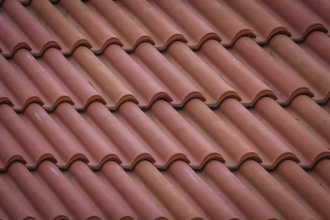In the intricate dance of window installation, one step often underestimated yet pivotal to the performance’s success is proper shimming. It might seem like a minor detail in the grand blueprint of construction and renovation projects. However, understanding the crucial role that shimming plays can be the difference between a window that functions seamlessly and one that becomes a persistent headache.
Shimming is, above all, about precision, ensuring stability, and maximizing the lifespan of your windows. This guide will walk you through the importance of proper shimming, providing the knowledge you need to avoid common pitfalls and achieve a flawless finish in your window installation projects.
Proper Shimming Technique
The art of proper shimming is a necessary process that ensures your windows operate smoothly, seal tightly, and remain structurally sound. Essentially, shimming is the fine-tuning of the window’s level and squareness by inserting small wedge-shaped pieces of material between the window and its framing.
When done correctly, the window’s performance is optimal, and it can last for years without any complications. If you don’t know anything about the shimming process, online resources like Deslauriers will help you understand the basics. The next time you’re installing a window, take the extra time to shim it correctly and enjoy the benefits of a fully functioning window for years to come.
High-Quality Shims
High-quality shims, designed specifically for window installation, are a must-have to ensure the window is properly supported and functions efficiently over time. These shims are made to provide the necessary strength and durability to hold up the weight of the window frame without bowing or compressing. They are also resistant to compression over time, ensuring your window remains securely in place for years to come.
When selecting shims, be sure to opt for those specifically designed for window installation to ensure the highest level of quality and performance. You don’t end up saving money by using low-quality shims as they can compromise the stability and function of your windows in the long run.
Level and Square
Ensuring that your window is both level and square is fundamental to its installation and overall operation. This step cannot be overstated in its importance; a window that is off-level or not square can lead to a host of problems, including improper operation, drafts, and water leaks. It impacts both the aesthetic appeal and the energy efficiency of your home.
Using a spirit level and taking accurate measurements are key practices in achieving this precision. These tools help in identifying any discrepancies in the alignment of the window, allowing for the appropriate adjustments to be made with shims. This meticulous attention to detail ensures that the window looks right and performs effectively.
Measuring Tape and Hammer
Two essential tools for proper shimming are a measuring tape and a hammer. A measuring tape is necessary to accurately determine the size of the gap between the window and its framing while a hammer is used to gently tap the shim into place.
When using a hammer, take care not to strike too hard as it can cause damage or crack the window frame. Instead, use gentle taps to carefully adjust the shim until it is in the correct position. Patience and precision are crucial when using these tools for shimming.
Caulking Gun and Sealant
A caulking gun and sealant emerge as crucial components in the final stages of window installation, ensuring your windows are not just installed but also sealed effectively against the elements. This is where the magic of a well-executed shimming job meets the protective seal that guards against water intrusion and air leaks.
Once you apply a high-quality sealant around the perimeter of the window frame, you create a barrier that enhances energy efficiency, reduces outside noise, and prolongs the life of the window. It’s a step that underscores the significance of every detail in window installation, encapsulating the craftsmanship involved in providing a home with comfort, security, and aesthetic appeal.
Screw Gun and Screws
If you’re planning on installing a new window, it’s essential to have the right tools for the job. Specifically, you’ll need both a screw gun and the appropriate screws to securely attach the window to the frame.
While it might be tempting to overlook this step and hope that any old screws will do the trick, take the time to ensure you have the correct length and type of screws for your specific window. Using the wrong screws could lead to an insecure installation that could compromise the integrity of your home, which is why it’s always better to do it right the first time.
Window installation is a task that demands precision, attention to detail, and the right tools and materials. From the critical role of proper shimming to the necessity of high-quality shims, ensuring your window is level and square, and sealing everything up with a reliable caulking gun and sealant, each step aims to achieve a successful installation.
Armed with a screw gun and the correct screws, your project is set for success, ultimately contributing to the comfort, energy efficiency, and aesthetic appeal of your home. The time and effort invested in properly installing a window pay off in the long-term functionality and durability of your investment.













